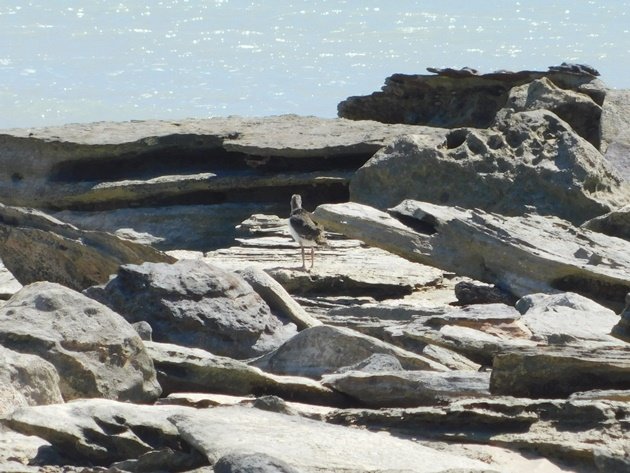
The one surviving Pied Oystercatcher chick that I introduced you to four weeks ago continues to thrive. Although it is stood alone in the header photo it has its parents very close by. They will warn it of any dangers both vocally and flying at any threat. The family of Pied Oystercatchers soon made their move to Gantheaume Point. Due to the presence of vehicles on the beach during the day close to the reef they would have had to make the journey over-night. Gantheaume Point offers both food and protection for a young Pied Oystercatcher chick, which is very important when they are unable to fly. It is very easy for a Pied Oystercatcher chick to hide among the rocks.
The Pied Oystercatcher chick has now gone beyond the four week mark and is developing well. It needs to grow flight feathers and learn to fly before it is safe from predators, but we are cautiously optimistic. It appears to be obedient when warned to hide by its parents. It is feeding itself and also taking food from its parents. Typically the whole Pied Oystercatcher family spend a lot of time either feeding or roosting. The easiest way to observe them is to wait for an incoming tide and they will have to move up the beach.
The juvenile Pied Oystercatcher has camouflage in its favour. The adult bird stands out, but if the juvenile bird stays still it is not so obvious. The juvenile bird is in the photo below to the lower left of the adult.
Adult and juvenile Pied Oystercatcher
The juvenile Pied Oystercatcher gives you a glimpse into its development when it stretches a wing out and when it stands close to its parents for size comparison.
Juvenile Pied Oystercatcher having a stretch
Juvenile Pied Oystercatcher front on
Juvenile and adult Pied Oystercatcher in the rocks together
As the tide pushes in they are forced across the sand to the next hiding spot. The juvenile bird is not overly concerned about being really close to either of its parents and will run ahead to hide if needed.
Juvenile Pied Oystercatcher-legs made for walking!
In about two weeks’ time the juvenile Pied Oystercatcher will have developed its flight feathers and could fly if required. Pied Oystercatchers are not a species that we observe flying very often at all. They prefer to walk away from you to lead you away from eggs, chicks or their territory. The main occasions that they fly are to chase away raptors and in display flights during the courting period.
We are cautiously optimistic that this Pied Oystercatcher chick will survive now. It will remain with its parents for a few more months and then join a non-breeding flock either to the south or north of Gantheaume Point. We would not expect it to breed for several years yet.


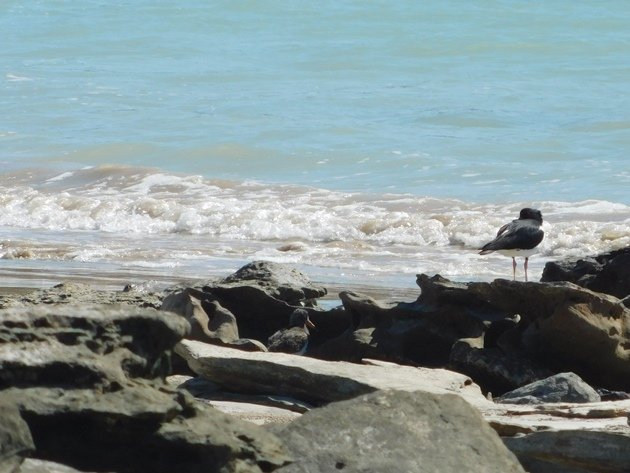
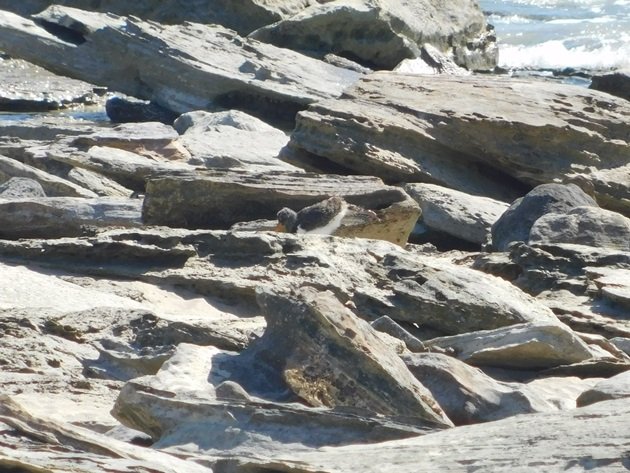
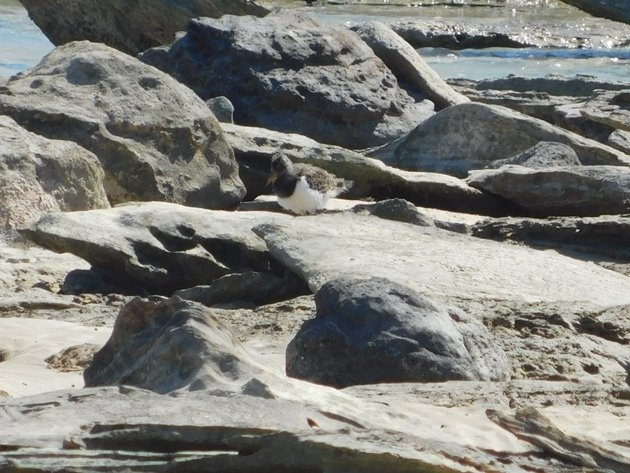
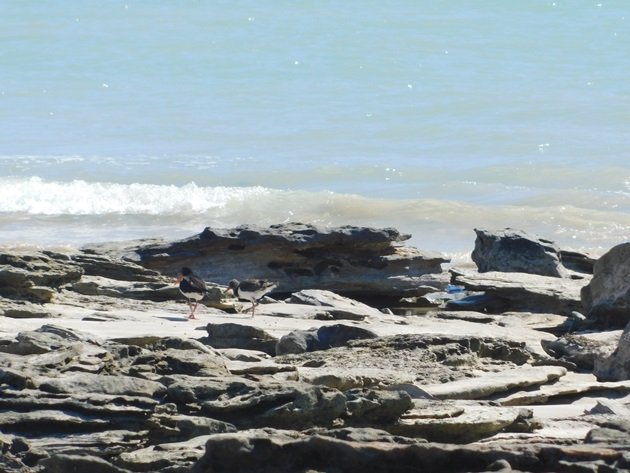
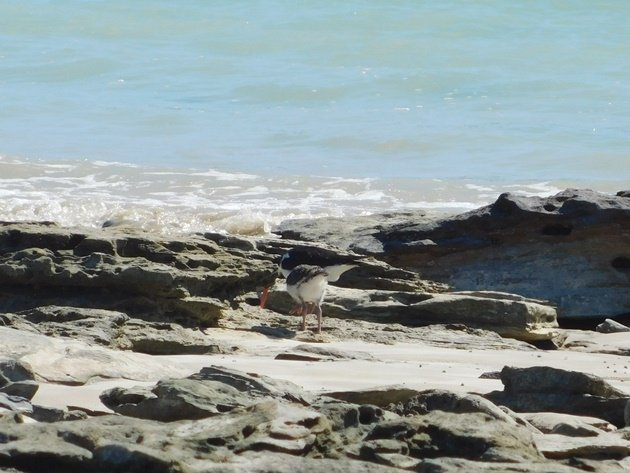
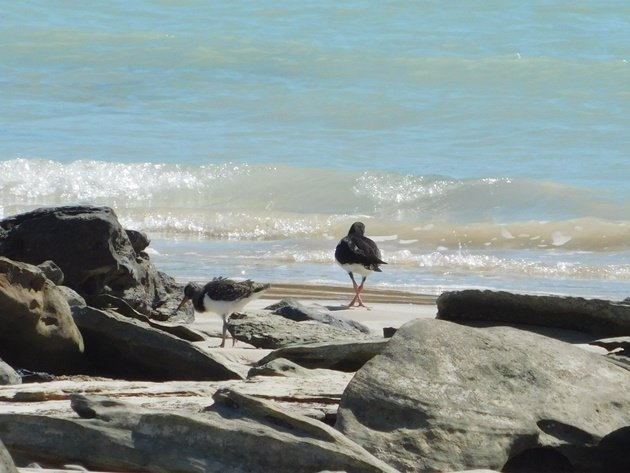
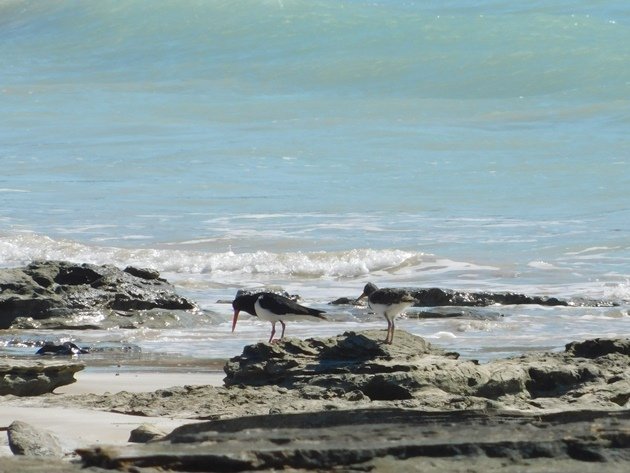
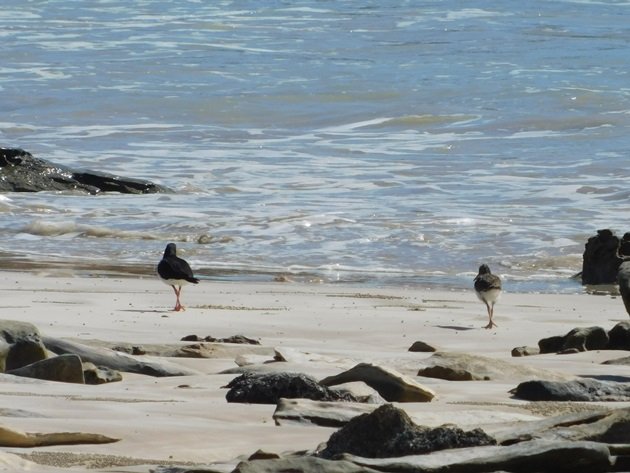
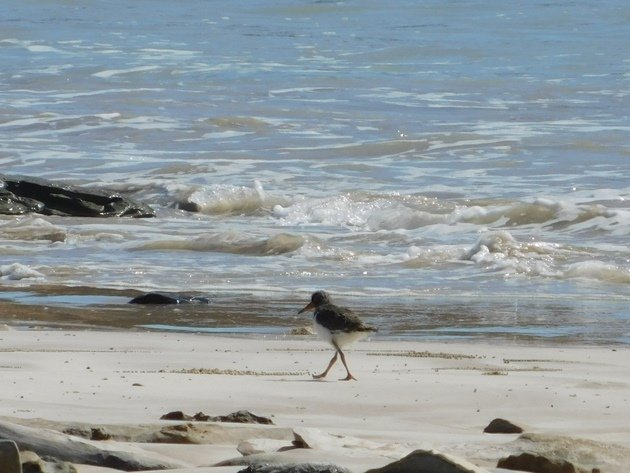
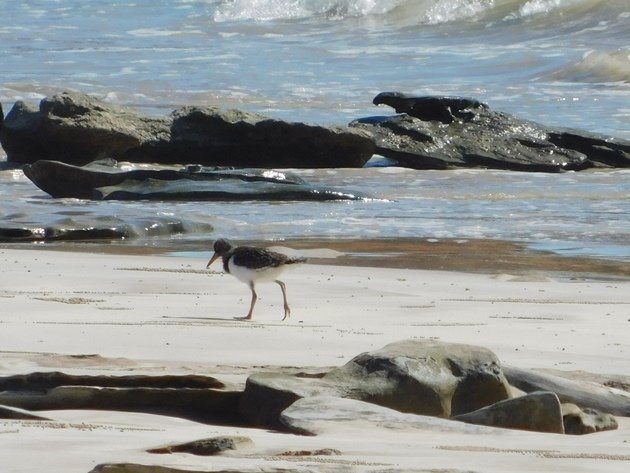











Wow, great news, and so big already! I really hope this chick survives. I’m often impressed with what good parents birds can be. They exhaust themselves feeding them, they guard them, they teach them. It’s also interesting that you said you rarely see these oystercatchers fly. Here on the Olympic Peninsula we have Black Oystercatchers, and they often fly along the beaches. You often hear them calling in flight with their distinctive call long before seeing them. Sometimes a group will arrive, calling, and a few minutes later a single bird will fly in, calling, to join the group.
Hi Clare,
This is heartening news. Thank you for the update and the great photos. I sure hope the little guy survives. How far of a walk is it from where he hatched to Gantheaume Point?
Hi Lisa,
It is over 3 kilometres, so a good walk! Those legs are made for walking! Incredibly they always do this trek! We are hopeful…you have to be!
Hi Wendy,
We do have some flocks of Pied Oystercatchers and Sooty Oystercatchers here that sometimes move about in flocks, but once they have a territory as a pair they tend to walk everywhere! Short flights if the tide races in as they feed, but generally a lot of walking! It makes for easy “tracking”!
Will keep my fingers crossed for him, Clare!